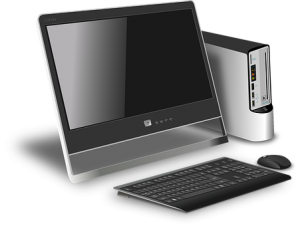Laptop Not Connecting To Internet
In our digital age, having a reliable internet connection is more than a convenience—it’s an essential part of daily life. But what happens when your laptop won’t connect to internet or WiFi? Whether you’re trying to meet a work deadline, attend an online class, or simply browse the web, these connectivity issues can bring your online activities to a screeching halt.
 In this comprehensive guide, we aim to help you understand and solve these frustrating issues. We’ll explore the labyrinth of reasons why your laptop won’t connect to internet or WiFi and provide clear, practical solutions to get you back online.
In this comprehensive guide, we aim to help you understand and solve these frustrating issues. We’ll explore the labyrinth of reasons why your laptop won’t connect to internet or WiFi and provide clear, practical solutions to get you back online.
But we won’t stop at simply diagnosing and solving these problems. This guide will also share preventive measures to keep your laptop connected to the internet or WiFi consistently, helping you avoid future connectivity problems. Because in the world of technology, being proactive can often save you a great deal of time and frustration.
So, if you’ve ever found yourself at a loss, wondering why your laptop won’t connect to internet or why your laptop not connecting to WiFi, you’re in the right place. Join us as we demystify these network connection issues and arm you with the knowledge you need to keep your digital world spinning.
Why Laptop Won’t Connect to Internet?
In the realm of digital connectivity, stumbling upon an issue where your laptop won’t connect to hotspot or when your laptop is not showing available networks can be particularly frustrating. However, these issues are often symptoms of underlying problems that can be effectively addressed once identified. Let’s delve into some common reasons behind these issues:
- Outdated Network Drivers: An outdated network driver could be the culprit when your laptop won’t connect to hotspot. Network drivers enable your laptop’s operating system to interact with the network hardware. If they are outdated, your laptop might fail to recognize or connect to available hotspots.

- Incorrect Network Settings: Incorrect network settings on your laptop can also lead to situations where your laptop is not showing available networks. If your network settings are misconfigured, your laptop might fail to scan and display available networks, even when they are within range.
- Interference from Other Devices: Sometimes, other electronic devices can interfere with your laptop’s ability to connect to a hotspot. This interference can cause a weak signal or even make your laptop unable to detect the hotspot, resulting in your laptop not showing available networks.
- Faulty Network Hardware: A hardware issue, like a malfunctioning network card in your laptop, could be why your laptop won’t connect to hotspot. Even if the network is available and functioning well, a hardware problem can prevent a successful connection.
- Issues with the Hotspot Itself: Sometimes, the problem lies not with your laptop but with the hotspot itself. If the hotspot is not configured correctly, is overloaded with too many connected devices, or has a weak signal, your laptop won’t connect to the hotspot.
- Operating System Bugs: Bugs in your laptop’s operating system can also lead to connectivity issues. These bugs can cause a variety of problems, including your laptop not showing available networks or your laptop failing to connect to a hotspot.
By understanding these potential causes, you are one step closer to solving your laptop’s connectivity issues. In the next section, we’ll guide you through the solutions to these problems, helping you to reconnect your laptop to the digital world.
How to Fix Laptop Not Connecting To Internet Issue:
Internet connectivity issues can be quite challenging, particularly when your laptop not connecting to internet or continually says no internet. Fortunately, with the right solutions at hand, you can address these issues effectively. Let’s discuss several strategies to help you reestablish your internet connection:
- Update Network Drivers: If your laptop not connecting to internet, one of the first things you should check is your network drivers. Make sure they are up-to-date. You can usually find the updated drivers on the manufacturer’s website.
- Check Network Settings: Incorrect network settings can often lead to a situation where your laptop says no internet. Make sure your network settings are correctly configured and align with your network’s requirements.
- Restart Your Laptop and Router: Sometimes, a simple restart of your laptop and router can resolve many connectivity issues. If your laptop not connecting to internet, try this straightforward solution.
- Check the Network Hardware: Check your laptop’s network hardware and any external devices like routers or modems. If there’s a problem with any of these, your laptop might say no internet. If you suspect a hardware issue, it may be best to consult with a professional.
- Troubleshoot Using Network Diagnostics: Most operating systems come with built-in network diagnostics tools. If your laptop not connecting to internet, use these tools to identify and resolve the issue.
- Contact Your ISP: If all else fails and your laptop still says no internet, it may be worth to contact your Internet Service Provider (ISP). There could be an issue on their end that’s preventing you from accessing the internet.
While the challenge of a laptop not connecting to internet or saying no internet can seem daunting, with a systematic approach, you can identify the issue and implement the right solution to get back online. Remember, patience is key when troubleshooting these problems.
How to Avoid Laptop Says No Internet Issue
Navigating through a day with no internet connection on laptop can be an uphill task. Or perhaps you’ve faced frustrating moments where your laptop not connecting to hotspot. These are common issues that, with some proactive steps, can be prevented from occurring regularly. Here are some strategies you can employ:
- Regular Network Driver Updates: Outdated network drivers can often lead to a situation where there’s no internet connection on laptop. Regularly updating your laptop’s network drivers can ensure compatibility with your network or hotspot and reduce connectivity issues.

- Proper Network Configurations: Incorrect network settings can cause connectivity issues, such as your laptop not connecting to hotspot. It’s essential to verify your laptop’s network settings and adjust them according to your network or hotspot’s requirements.
- Routine Hardware Checks: Routine checks and maintenance of your laptop’s hardware, including its network card and associated components, can prevent many connectivity issues, including scenarios with no internet connection on laptop.
- Limit Network Overload: Too many devices connected to the same network or hotspot can lead to network congestion, resulting in your laptop not connecting to hotspot. Regularly monitoring and managing the devices connected to your network can prevent such issues.
- Regular System Restarts: Regularly restarting your laptop can help maintain its performance and clear minor bugs or issues that might lead to no internet connection on laptop.
- Stay Informed about Network Changes: Keeping updated with changes or maintenance schedules from your Internet Service Provider (ISP) or network administrator can help you anticipate and mitigate issues like your laptop not connecting to hotspot.
By adopting these preventive measures, you can decrease the likelihood of facing a scenario with no internet connection on laptop or issues with your laptop not connecting to hotspot. Being proactive can help ensure a smooth, seamless online experience, saving you from potential connectivity headaches down the line.
Conclusion:
 WiFi connectivity issues can be disruptive and frustrating. Whether you’re dealing with situations where your laptop won’t connect to WiFi or finding at all, these problems can put a dent in your productivity and disrupt your online activities.
WiFi connectivity issues can be disruptive and frustrating. Whether you’re dealing with situations where your laptop won’t connect to WiFi or finding at all, these problems can put a dent in your productivity and disrupt your online activities.
However, as we’ve navigated through this guide, we’ve unveiled the various reasons behind these connectivity issues, learned about practical solutions to address them, and discussed proactive measures to prevent them. With this knowledge, you are now well-equipped to tackle WiFi connectivity issues head-on.
Remember, when you’re faced with a scenario where your laptop won’t connect to WiFi, it’s not an insurmountable problem but a temporary glitch that can be solved. Understanding the problem, taking a systematic approach to solving it, and being patient throughout the process is key to resolving these issues. To know more about our services, please visit our Homepage.

